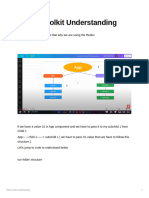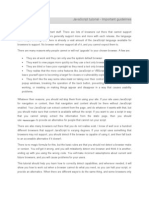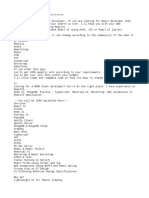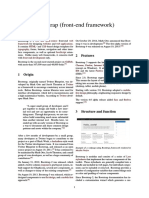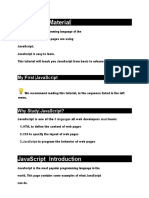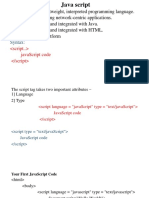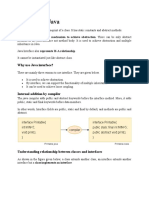0% found this document useful (0 votes)
298 views9 pagesJavaScript Automation CheatSheet
This document provides a cheat sheet of JavaScript techniques for automation, including DOM manipulation, event handling, network requests, promises, timers, storage, arrays, objects, strings, dates, errors, APIs, JSON, windows, history, forms, CSS, documents, animation, security, files, communication, events, templates, performance, mobile, networking, workers and security best practices. It lists methods for each technique in bullet points with brief descriptions.
Uploaded by
johnCopyright
© © All Rights Reserved
We take content rights seriously. If you suspect this is your content, claim it here.
Available Formats
Download as PDF, TXT or read online on Scribd
0% found this document useful (0 votes)
298 views9 pagesJavaScript Automation CheatSheet
This document provides a cheat sheet of JavaScript techniques for automation, including DOM manipulation, event handling, network requests, promises, timers, storage, arrays, objects, strings, dates, errors, APIs, JSON, windows, history, forms, CSS, documents, animation, security, files, communication, events, templates, performance, mobile, networking, workers and security best practices. It lists methods for each technique in bullet points with brief descriptions.
Uploaded by
johnCopyright
© © All Rights Reserved
We take content rights seriously. If you suspect this is your content, claim it here.
Available Formats
Download as PDF, TXT or read online on Scribd
/ 9













